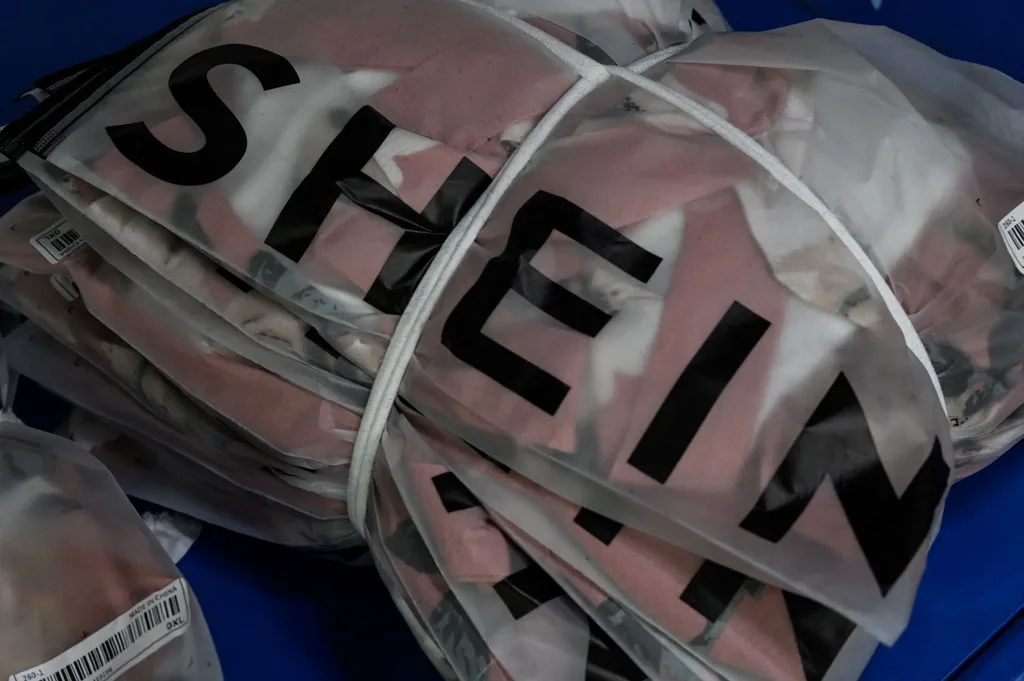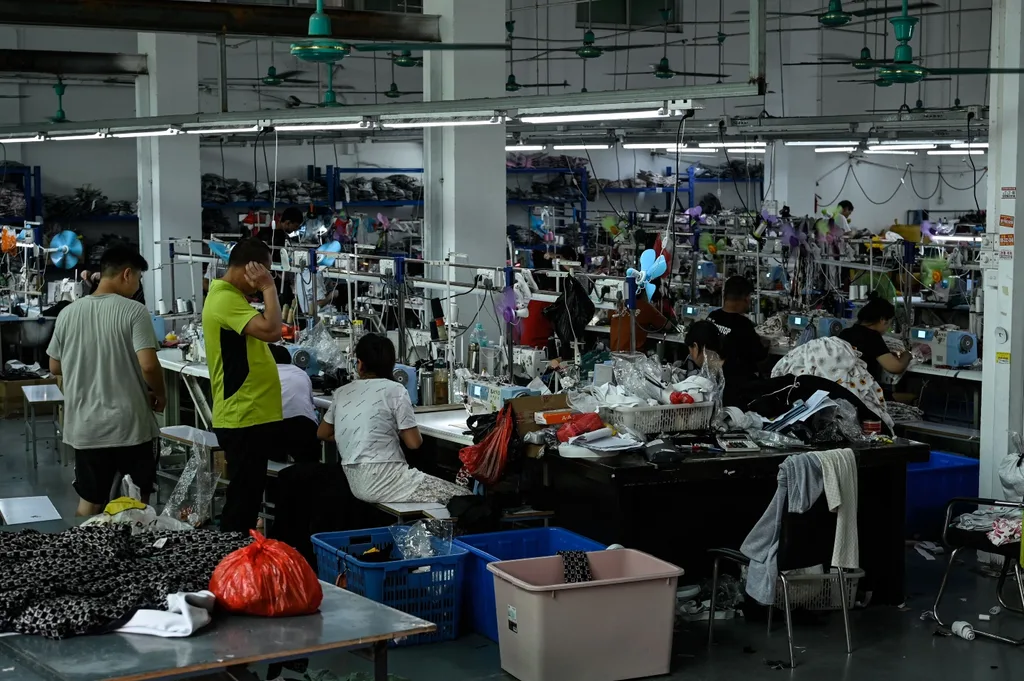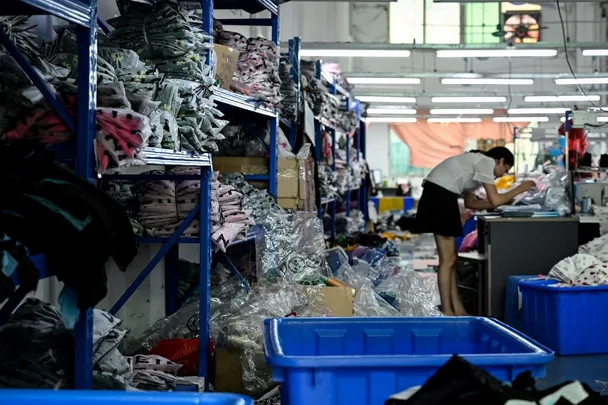Nineteen-year-old Gabriella is over the moon. The Brisbane TikToker, who goes by the handle gabriellaabeth, has more than 1.2 million views of her video featuring her first ever “Shein haul”—the highest number by far for any of her TikTok videos.
“I got so excited watching others buy and receive their Shein orders so I finally caved and bought from them. Considering each product is so cheap, if I was to buy from Shein more often I think the cost would sit around the $20 to $50 mark, mainly because you can have so many items for so much less,” she tells marie claire. “I would 100 per cent recommend Shein, as it’s so affordable and I think just about anyone can find something they’ll like or even love from the store.”
Gabriella is just one of hundreds of thousands of mostly young women sharing footage on social media of the items they’ve bought from fashion brand Shein (pronounced “she in”), with the hashtag #sheinhaul at more than 9.2 billion views on TikTok. While Gabriella isn’t paid—yet—for spruiking Shein, many of her fellow influencers are. These #sheingals, a mix of fashion bloggers and micro-celebrities, help the brand multiply its reach. The more the reach grows, the more people consume Shein.
It’s a smooth machine churning out hashtags and hauls as easily as it does designs. With anywhere between 2000 to 10,000 new styles added each day, Shein eclipses its competitors in terms of sheer output.
One thing is certain: this is no longer just fast fashion. It’s ultra-fast fashion and critics say it comes at a high price. As sales have soared across the globe, this saturation of nonstop fashion at pocket-money prices has been increasingly condemned for both its negative impact on the environment and its poor labour practices. Shein’s ultra-fast fashion model may be cheap but is it actually costing the earth?
Founded in 2008 under the name ZZKKO in the city of Nanjing, China, the company’s meteoric rise came seemingly out of nowhere. In the blink of an eye, the online-only store was delivering to more than 150 countries, catering predominantly to young women in their teens and twenties. It doesn’t sell just clothes and accessories. Need a wall decal? Fish-head costume? Nose-lifting clip? You can get it at Shein for less than the price of a cup of coffee.
According to Bloomberg, the company’s sales grew from $10 billion in 2020 to $100 billion just two years later. Much of Shein’s success is credited to its founder, Chris Xu, a search engine optimisation specialist variously reported as born in China or the US. “[Xu’s] not even thinking about making clothing. He’s thinking about distributing clothing,” Dr Mark Liu, a fashion and textile designer and pioneer of zero-waste fashion design, tells marie claire. “When Covid hit, a lot of the fast fashion people like H&M and TopShop relied on bricks and mortar retail stores. Shein is just completely online, so they were able to do so well.”

Unlike other fast fashion companies that have headquarters in Europe or the US while labour is done in Global South countries such as China, India and Bangladesh, Shein operates entirely in and from Asia (predominantly China and Singapore), which allows it to maintain tight control and work just that much faster and more efficiently. Like many online-only companies, Shein also harnesses the power of social media and uses discount codes and coupons to draw consumers back to their site. Not to mention their reliance on artificial intelligence.
“They’re basically ingesting all this data from social media and processing it,” says Liu. “Instead of having humans predict trends or buyers predict trends, they’re just using analytics … they’re automating parts of things that were once very human. We used to think fast fashion was obscenely fast. In the fashion world, we were doing four collections a year. And then fast fashion companies came in with, ‘OK, we’re going to bring in stuff twice a week
or once every two weeks.’ And now, with ultra-fast fashion, things are just running. It’s nonstop and it’s not even human-based anymore.”
The speed at which ultra-fast fashion moves is what makes the entire practice unsustainable. With textiles contributing more to climate change than international travel and shipping combined, what we wear and how we wear it matters. Dr Taylor Brydges, a research principal at Australia’s Institute for Sustainable Futures, says fashion is not only now consumed quickly but discarded just as fast. “Our parents and grandparents weren’t shopping this way. Clothes that they had were kept for a really long time,” she says. “We talk about single-use plastics but nowadays it’s also single- use clothing – it’s clothes designed for social media. It’s not about how clothing feels or sits or moves, it’s about how it is going to be photographed. And likely be photographed only once.”
Adding to this problem of over-consumption is the double-punch impact of excessive waste generation of eco-unfriendly materials. These days, to maintain the low price point of ultra-fast fashion items, the materials used in fast fashion are hard-to-break-down synthetic fibres such as polyester and spandex. “At the moment, 69 per cent of all fibres used are polyester,” says Liu. “So imagine we’re banning single-use plastics but then fossil fuel companies are like, ‘OK, I can’t sell plastic here anymore, I’ll just change it to polyester and I can sell it for more money. And I can sell as much as I want because there’s no legislation to stop me.’ We call it fossil fashion.”
According to a report by the Australian Fashion Council (AFC), roughly 260,000 tonnes of textiles will end up in landfill in Australia each year. That’s about 10kg per person. When you consider three out of five fast fashion pieces are estimated to end up in landfill, the numbers are staggering. It’s right about now that you might be thinking, “Wait a minute, I give my clothes to charity so I’m not part of the problem.” Unfortunately, it’s not as simple as that.
“Because our textile recycling systems are so poor in Australia and other Western countries, we’re reliant on the charitable sector now to be responsible for this waste,” says Brydges. “So we say, ‘Let’s give it to charity, let’s do some good.’ We’re then seeing clothes that are not being sold locally being sold into global second- hand markets like Ghana, where it is essentially becoming landfill in other countries. So we either throw it away or we make it someone else’s problem on the other side of the world.”

Shein says it has committed to reducing absolute greenhouse gas emissions across its entire value chain by 25 per cent by 2030, and has also publicly shared its vision of a fully circular textile economy by 2050. Circular fashion is a system of creating a garment with a focus on longevity and reduction of waste, thus closing the loop on production.
“Our unique on-demand business model enables us to reduce the waste and over-production typically associated with the fashion industry. [It does this] by producing an ultra-small batch of each style on oursite – as few as 100 pieces – gauging market response, and then communicating this feedback with supplier partners almost immediately,” Shein’s spokesperson tells marie claire. “As a result, we only respond with larger production to meet demand if it’s warranted, reducing the unsold inventory percentage to single digits, versus an industry average of about 30 per cent.
The other allegation raised against Shein concerns the poor treatment of workers in its supply chain. While there had been rumblings about the working conditions in its factories for years, it was not until the UK’s Channel 4 released a documentary titled Inside the Shein Machine in October 2022 that the truth was exposed. Hosted by journalist Iman Amrani, the footage from concealed cameras laid bare the long working hours, low wages and unrealistic expectations experienced by factory workers in Guangzhou, China. The program revealed that workers are paid six cents per item, and that they’re asked to produce up to 500 items in their 18-hour workday. In response, Shein stated that it had shut down operations in the two affected factories until the issues are resolved and that it would double its investment in the Shein Responsible Sourcing program.
Despite the company’s negative image, Gen Z women such as TikToker Gabriella appear to have no qualms about purchasing from the brand. “Shein came out a while ago stating to the public that they don’t condone child labour. Yes, the items are made from cheap production but it doesn’t mean they’re paying terrible wages,” Gabriella tells marie claire. “If there are any type of young people working in those factories, I see the situation much the same as a teenager getting paid $10 an hour here in Australia for retail/hospitality jobs. Apologies to those who think differently, but that whole situation made me feel less ‘guilty’ after buying from Shein.”
The push and pull between Gen Z being the “woke” generation versus their consumption of fast fashion is an interesting one, perhaps best explained simply by the rising cost of living. “The housing market’s terrible, the labour market’s terrible, the pandemic made things worse,” says Brydges. “And, to be frank, it just costs more to shop better.”

That’s another issue to consider. By its very nature, slow fashion is much more expensive than fast fashion, which often deters people from buying. It also rarely caters to the plus-size market, something a brand like Shein does very well. On TikTok, the hashtag #Sheinplussize has more than 190 million views. Inclusivity is a systemic challenge in the luxury and slow fashion industry, and ultra-fast fashion companies such as Shein are taking full advantage of that.
Ten years ago, in April 2013, the Rana Plaza factory in Bangladesh collapsed, killing at least 1134 fast fashion factory workers. It was a wake-up call for the retail and fashion industry certainly, but the biggest wake-up call was for consumers. Suddenly our euphoria over the “democratisation of fashion” and “fashion for everyone” dimmed in the light of the truth: that the price for fast fashion came at a much higher cost than we all knew: human life.
Yet what has really changed in 10 years? Did we wake up, only to fall asleep again? “We’ve seen international labour organisations [in Bangladesh], we’ve seen governments pushing for change,” says Brydges. “We see a lot of these interventions. But one of the things that’s so amazing about the fashion industry, in a bad way, is just how incredibly resistant it is to change.”
There are a few ways to push for real, tangible change. One of them involves the L word: legislation. While we may think there are laws policing fashion, there really aren’t. We have self-regulatory bodies such as
Ethical Clothing Australia, whose accreditation program seeks to create a level playing field for the brands and manufacturers that pass an ECA audit, but there are no federal government agencies – although the Minister for the Environment, Tanya Plibersek, has put the fashion industry on notice.
“One thing that we can all do, no matter who we are, is ask for legislation that will tax plastics or tax fast fashion in some way,” says Liu. “It’s also really difficult to make fast fashion without laws that are biased against women or people of colour. Women do about four times as much unpaid labour as men but they also get paid less. So ‘Gender Just’ laws are a pillar of getting ourselves out of this problem.”
Of course, the onus does come back to consumers not only recognising that there is a potential negative impact for all our purchases but then also doing something about it by no longer purchasing from non-sustainable brands.
Brydges says organisations must step up and take ownership as well, instead of greenwashing (exaggerating their environmental credentials). “The brands are the ones putting products on the market and do have a lot of responsibility. The role they play is very important,” she says.
“Also, it’s not like slow fashion is the be all and end all, and that fast fashion or ultra-fast fashion is terrible. That’s too simple. Lots of slow fashion is made with polyester. You can over-consume any kind of fashion. Equally, you could buy a fast fashion blazer or shirt and wear it for 10 years. You can repair it and mend it and not put it in the dryer so it doesn’t shrink. A lot of those are individual practices. What levers of change do we have? How can we think about our practices and extend those into our community to reconnect with clothing? Those are all things that we can and should be doing.”
This story originally appeared in the may issue of marie claire Australia.










